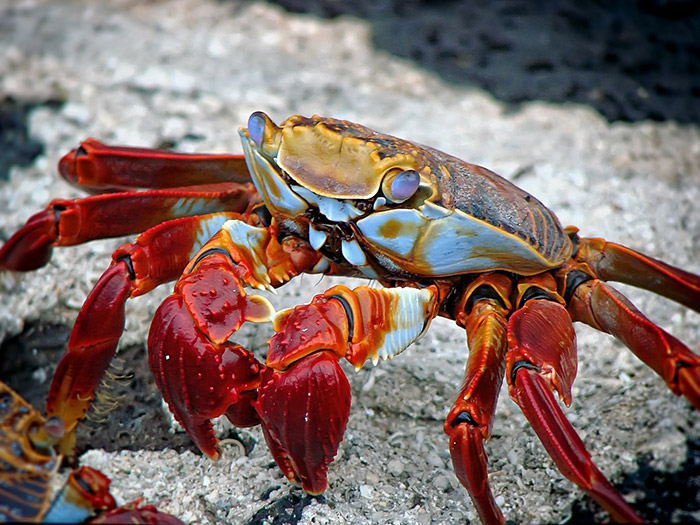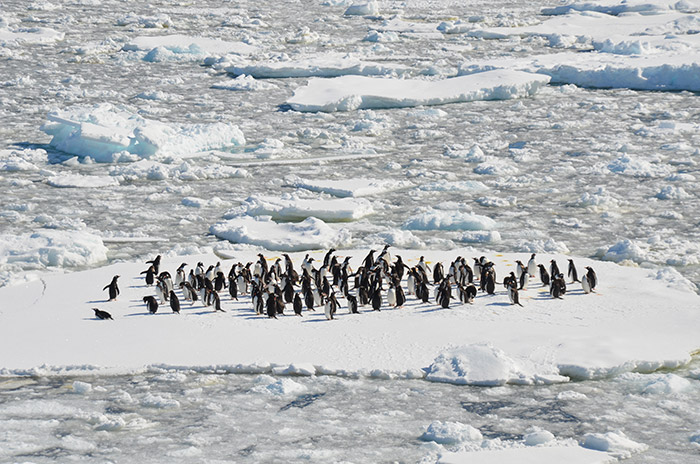A cruise in Antarctica offers visions that are far from the daily imaginary, landscapes suspended between sky and earth, water-flooded mountains whose peaks rise more than a thousand meters looking over a sea that is as shiny and dark as molten metal. In Antarctica, nature expresses its grandeur in a colossal and uncompromising way, leaving the visitor overwhelmed by the untouched beauty of this immense continent at the end of the world.
Today, Antarctica is a destination for voyages and explorations, but most visitors arrive by sea, aboard special expedition ships or discovery yachts, built or adapted to the climate and Arctic navigation. Most of these ships are equipped with reinforced hulls suitable for navigation in the ice, however they boast very high standards of luxury inside.
The itineraries vary from one company to another, most ships sail from Ushuaia in Argentina during the summer (November-March) in the Southern hemisphere and head to the various scientific bases and nature reserves along the coast of the Antarctic peninsula closest to South America, or combine the Antarctic itinerary with South Georgia and the Falkland Islands to the Ross Sea. The smaller the ship, the more authentic the experience along the glaciers. Only ships with a maximum capacity of 200 guests are allowed to take people ashore using inflatable boats, helicopters and even submarines to explore the glaciers and observe the local wildlife. A dedicated team of experienced guides, naturalists and photographers accompany cruise passengers on excursions to discover the wonders of Antarctica and its enchanted landscapes in a unique and unforgettable experience. When the weather conditions permit, as did the first explorers, you will reach the Antarctic Circle at latitude 66°33' 46' South of the equator. A cruise to Antarctica is a different and unexpected adventure and offers the opportunity to get to know a place that is still one of the few unexplored places on earth. Meeting a colony of penguins, admiring the icebergs from the balcony of your suite, flying over a glacier in a helicopter or diving into the ice in a submarine is a unique and unrepeatable experience.
The season for travelling in this part of the world is short. Regardless of the time of year, every day will provide an extraordinary experience. November and December, late spring and early summer, are the ideal time. Life is reborn under the warmth of the sun, huge shimmering icebergs break away overwhelmingly letting themselves float in the sea, and nature starts off the reproductive cycle with colonies of penguins engaged in the usual courting ritual and sealions caring for their newborn babies.
I mesi estivi di gennaio e febbraio offrono giornate lunghissime con quasi 24 ore di luce e temperature di 1 o 2 gradi sopra lo zero. Le balene si concentrano numerose alla ricerca di cibo mentre le foche mangiagranchi oziano sugli iceberg. Il ghiaccio si è sciolto facilitando l’attraversamento del Circolo Antartico e l’esplorazione del Mare di Weddell.
The summer months of January and February offer very long days with almost 24 hours of light and temperatures of 1 or 2 degrees above zero. The whales concentrate in search of food while the crab-eating seals are lying lazily on icebergs. The ice has melted making it easier to cross the Antarctic Circle and explore the Weddell Sea.
Fall arrives in early March letting the sun go beyond the horizon and marking the return of the polar nights. Temperatures are still slightly above zero, but the Arctic cold takes over inexorably; during this period South Georgia and the Falklands are home to an incredible concentration of wildlife.

The Galapagos Islands
There are few pristine paradises on Earth, and the extraordinary Galapagos Islands are undoubtedly one of them. This archipelago of volcanic islands, lost in the Pacific Ocean, has benefited from its geographical isolation for hundreds of years, giving rise to some unique endemic species. This incredible and rare ecosystem played a fundamental role in Charles Darwin's revolutionary theory of the "Origin of Species" and the subsequent theory of evolution in 1859. Many of the species that inspired Darwin still survive in the Galapagos and the cruise is the best way to explore these impressive islands and have the opportunity to observe incredible species such as blue foot-blue soles, sealions, lizards, flamingos, herons, egrets and bitterns, stingrays, albatrosses and even the famous Galapagos giant turtles that were thought to be extinct together with a team of experienced naturalists. Overland excursions are restricted to minimize the environmental impact, guides are essential and luxury companies always grab the best ones. Most of them are specialists in marine biology or ornithology, speak excellent English and are always ready to answer any questions. In addition, luxury companies offer their guests exclusive services, such as the possibility to shoot underwater videos or use underwater microscopes to collect plankton samples whose images are shown on board on large high-definition screens.
Luxury ships are always equipped with special glass-bottomed vessels to allow guests to see otherwise unreachable coral reefs up close. There are plenty of equipment to practise water sports, such as paddleboard or kayak, and snorkeling equipment, including wetsuits, is always included. Photographers and cameramen on board are available for guests to create memorable albums of memories or videos of the expedition. The ships offer all the comforts of a five-star hotel, from the doctor on board to the laundry, special restaurants and 24-hour room service. The kitchen is run by the best chefs to offer an extraordinary culinary experience and the wine list includes an endless variety of fine wines and spirits. Wi-fi, gym, spa, library, it’s all-inclusive luxury. In addition, cruise companies often offer air transfers from Quito or Guayaquil, in Ecuador, to the Galapagos and pre-cruise nights in luxury hotels.
There are two main seasons in the Galapagos Islands: a hot and humid season between December and June and a cooler and drier season between July and November. During the warmer season rainfall is mostly present in the form of afternoon showers, while the sea is calm and the time is ideal for snorkeling as underwater visibility is excellent.
The Galapagos can be reached from Quito, in Ecuador or Guayaquil straight to Baltra on the Island of Santa Cruz or San Cristobal.




